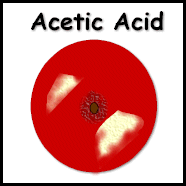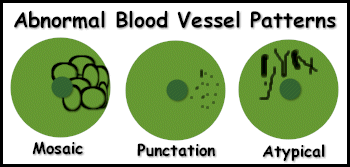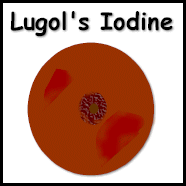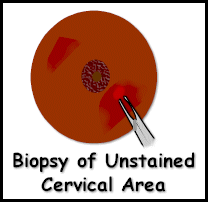The colposcope
is a binocular
low power microscope,which
helps
the gynaecologist to perform
colposcopy.
because It is
impossible to diagnose diseases or other problems simply by
looking at the
cervix with the naked eye.
A magnified view is necessary to find any abnormalities
A colposcopy is
done by a specially trained
doctor (colposcopist) in
a clinic or outpatient
The examination takes 10 - 20
minutes but the whole appointment may take about
an hour
This exam usually is done
between menstrual periods
patient must not use
anything in the vagina for 24-48 hours before the procedure
--includes
spermicides,
vaginal medications, douching products or tampons or vaginal
sex because These all
interfere with the
accuracy of the test
The colposcope
enables the gynaecologist to look at the cervix ,vagina
and
external genital
area
in detail
with magnification
(The Colposcope is not inserted into the vagina.),
in particular the area
in cervix where the smear
was taken from (usually
the
transformation zone).
Methods of Colposcopic Examination
•Classical
or Extended Colposcopy
•The
cervix and vagina are first
examined at magnification of 7x or 10x
following which excess mucus is
removed from the cervix
•Acetic
acid 3% to 5% is applied by cotton
swab.Abnormal epithelium appear as thick white (acteo-white)
•Schiller
iodine test may be applied
The doctor will use a
speculum,The Pap Smear is done as usual ,
under 2 - 3 different
magnifications,
Any excess mucus or
other secretions will be cleaned (The
Saline Technique)
from the cervix using a large cotton swab ,
the application of
acetic acid, a vinegar solution
(dissolves mucous and accentuates atypical areas
(white epithelium,
punctation, mosaic and atypical vessels) by causing cellular
dehydration and
coagulation of
cellular protein--The effect of the acetic acid peaks in
approximately 2
minutes and
fades in
approximately 5 minutes
thus doctor may need to
re-apply the
acetic acid
solution severa timesWhite epithelium is sometimes
associated
with dysplasia.
These areas will be biopsied by doctor near the end of
the procedure
,While the acetic acid is used different colored filters to
be able to see the blood
vessel patterns
that can't be seen using regular light.
The green filter
absorbs the red color so that the pattern of the
cervical blood vessels can be seen
paint the cervix and
vagina with an iodine solution called
Lugol's Solution. This stains the glycogen,

a component of cells.
Mature, normal cells will stain a dark-brown color.
Immature cells,
cervicitis, and dyspasia cells will not stain. This is
called a Schiller
Test. Non-staining areas will biopsied.
These are noted using
the hands of the clock, i.e.. 10:00, 1:00, etc.
A scraping if the
endocervical canal (ECC) will be done by a thin instrument
called an
endocervical curette ,
doctor will apply
pressure to the cervix using a large cotton swab to stop any
bleeding from the biopsy
areas. 
After examining the cervix and deciding what the appearance
of the cervix is
(again
this is subjective),
the gynaecologist will make one of
three decisions:
1-
2- (known as a low grade
abnormality)
(known as
a high grade abnormality)
All of these terms Below are roughly equivalent and
are often used interchangeably.
|
Biopsy Grading |
Smear Grading |
Colposcopy Grading |
|
Normal |
Normal |
Normal |
|
- |
Borderline |
Low Grade |
|
CIN 1 |
Mild |
Low Grade |
|
CIN 2 |
Moderate |
High Grade |
|
CIN 3 |
Severe |
High Grade |
|
|